Christchurch’s buses: The good and the bad
While clean buses and electric vehicles stand out, issues with route frequency and maintenance need attention.
During a recent trip to Christchurch, I got to experience the city’s public transport network as a commuter rather than a tourist, as I was working out of the Christchurch office and staying in Darfield. Below are some of the highlights (the good and bad) of Metro Canterbury services, and a few areas for improvement.
Clean and Well-Maintained Buses
I found the buses in Christchurch to be clean inside and out and generally well-maintained (more on this shortly). The ride was comfortable, particularly where the roads were also well maintained.Electrification
Like other operators across the country, Christchurch is introducing electric vehicles (EVs) into their fleet. CRRC and Geely electric buses are already running on select routes, and there are reportedly more EV buses on the way.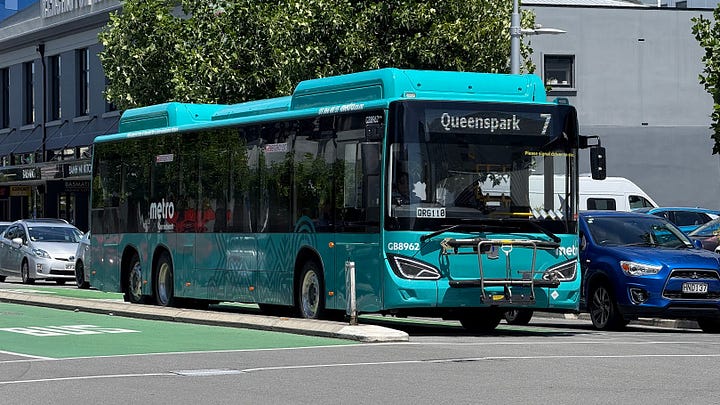
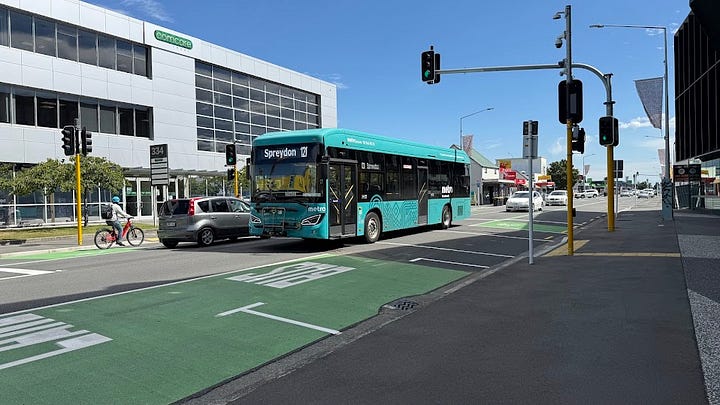
A Geely & CRRC electic bus in action - NZ Transit Buzz. Bus Shelters
While waiting for my bus to the airport, I noticed that my nearby stop had a fantastic basic shelter. It provided protection from wind and rain and also featured an interactive E Ink display that showed multiple upcoming buses, full timetables, and any service alerts.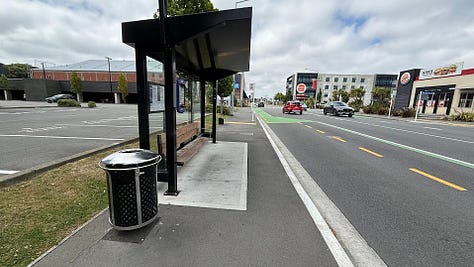

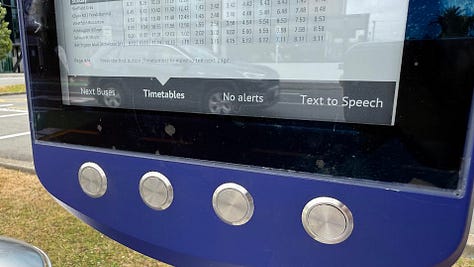
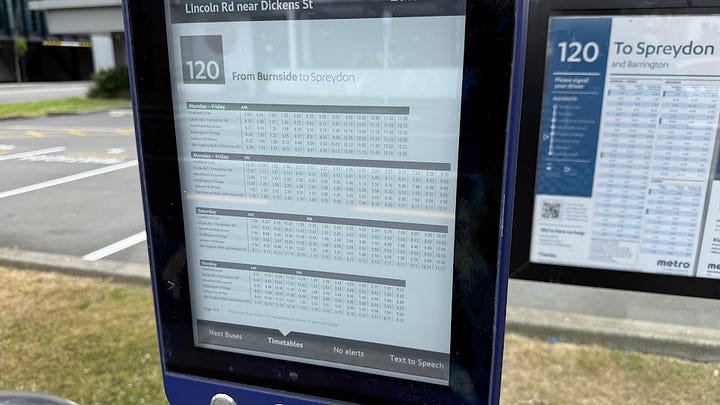
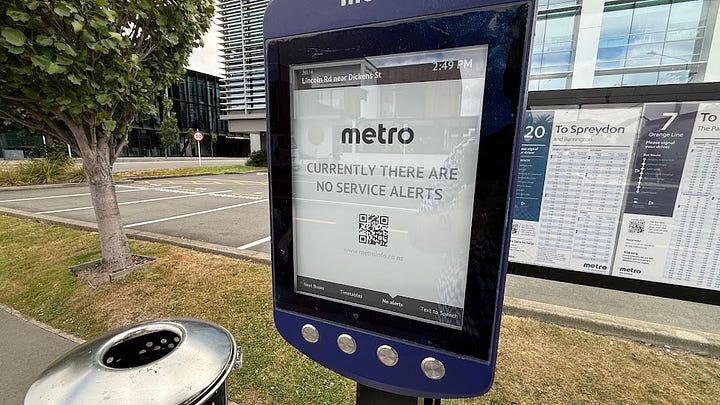
An example of a Christchurch Bus Stop & E Ink display - NZ Transit Buzz. Bikes on Buses
Although a temporary ban remains in place preventing the use of bus bike racks, I appreciate that Metro provides a training rack at the bus terminal in the city. This allows passengers who are unfamiliar with or wish to practice loading bikes onto racks a safe space to try it out.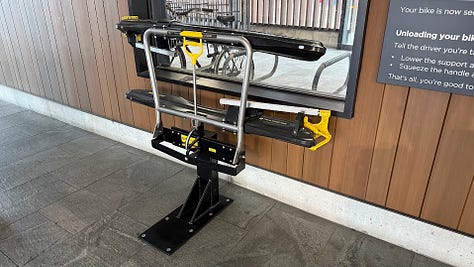
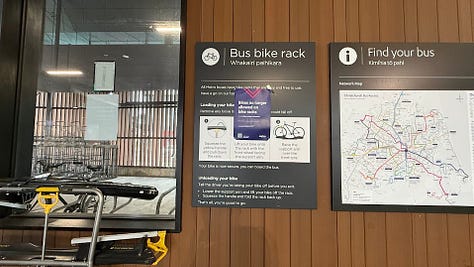

The training bus bike rack and bus with bike rack - NZ Transit Buzz. Branding
I liked the large explanation poster at the bus terminal detailing the Metro Canterbury design. While not everyone may be interested, it’s great to see such information available in an accessible spot for those who want to know more. Also, the Metro Canterbury colour scheme is lovely (perhaps this is just me being tired of the AT Navy Blue I see every day!).
Frequency
While most routes I used had good frequency, one of the main routes I took—the 86 from Darfield to the city centre—was lacking. This route runs only once a day each way during peak hours, which works for some but leaves others stranded.
For the most part, I was able to get to work on time using this route, despite a delay on Monday when the bus was held up for nearly an hour due to a flat battery. Having more frequent departures would offer more flexibility and allow passengers to take alternative services if there are delays.Maintenance
While most buses on the 86 route were fine, the bus I took on Monday with a flat battery suggests that maintenance might be an issue, or that the bus isn’t used enough to keep its battery charged (or perhaps lights were left on).
The bus I took on Tuesday also had a slight leak near the front doorway, resulting in a wet seat (I moved to another seat). The air conditioning also leaked and dripped on me occasionally until I moved again.
Platforms
Buses that use the city bus terminal are assigned platform numbers by bus control when they arrive. I don’t see why platform assignments couldn’t be made earlier, so passengers could wait closer to their arriving bus door instead of in a general platform area.
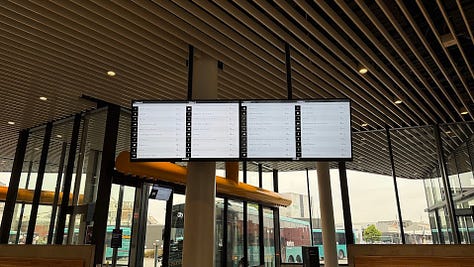
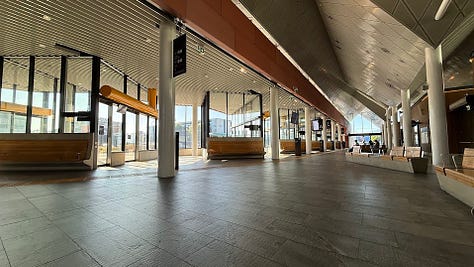
The waiting area at the bus terminal - NZ Transit Buzz. Shelters
Some stops I used had no shelter or seating, just a sign on the side of the road. Ensuring all stops are equipped with shelters would make services more welcoming and accessible to new users.Ticketing System
I was lucky enough to find a non-expired Metro card with credit in my wallet, so I didn’t need to go into the city ahead of time to buy a Metro card (as there is nowhere in Darfield that sells them). However, with the National Ticketing Solution in soon to be place, I could have used a Motu Move card instead, like I would in other regions, which would save space in my wallet.
I know the rollout is coming (slowly), and I was able to try it on Route 29 on my way to the airport. The sooner it’s available nationwide, the better.

A Motu Move reader and bus advertising Motu Move - NZ Transit Buzz










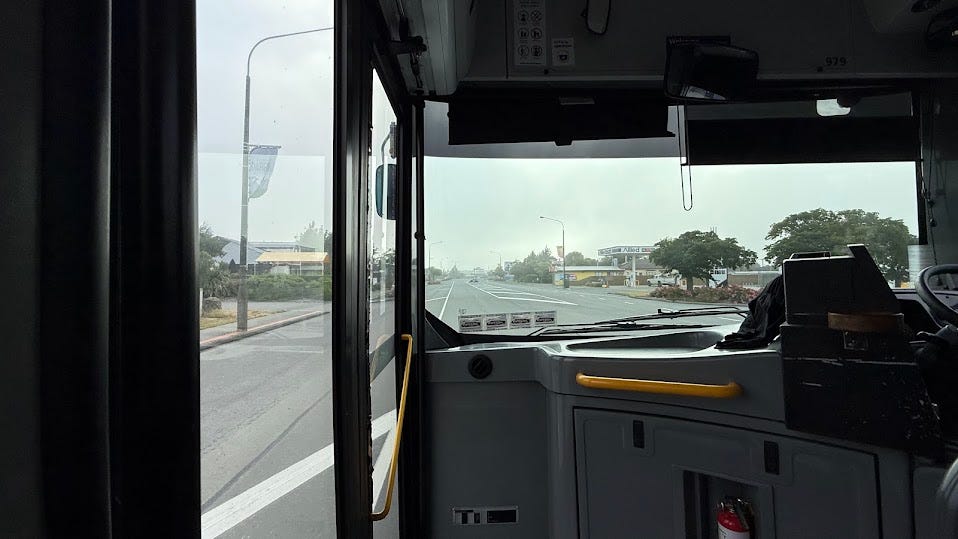

The e-paper timetables were a nice surprise. Once mainstream this technology will really help passengers.
The frequency of service will not encourage new ridership, and especially with so few departures each way. If it is a commuter service at least have it operating during commuter hours so that, as you say, people don't get stranded.
In the UK I'm not aware of a single bus station that operates without a pre-agreed stand allocation (or designated platform). Not only does it help passengers to know where to board their buses so they can prepare in advance, it will reduce the stress on drivers and help those have accessibility issues. For example, with a set stand/platform, passengers with loss of sight can navigate much more easily. For those with mental impairments the predictability helps them cope in an already stressful environment.
A great read. I like the choice of colour for the fleet.